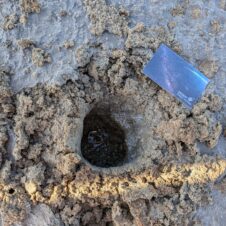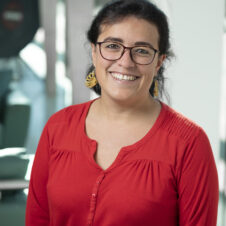
The Murchison Widefield Array (MWA) in the Murchison Radio-astronomy Observatory, WA. Credit: Dr Natasha Hurley-Walker (ICRAR).
MWA Project Director, Professor Steven Tingay, will be presenting the results at an international conference in the UK this week, and said, “The MWA is just starting to come online but is already producing world-class research, due to the extraordinarily high quality of the MRO as a location for ultra-sensitive radio telescopes.”
Professor Tingay said that a critical requirement for the MWA is the need to operate in an environment free from radio interference generated by human activities. FM radio stations, mobile phones, cars and industrial activities are major sources of interference that drown out the whisper-faint radio signals from objects in the distant Universe.
“For this reason, the MWA has been constructed at the MRO, where the level of interference is much lower than most other observatory locations around the world. An indication of the MRO site’s pristine conditions is the amount of data that is lost due to interference. At the MRO this is less than 1% percent, compared to close to 100% at some other observatory locations around the world,” said Tingay.
Due for completion November this year, the MWA already has a steady flow of research from it’s current configuration due to the excellent radio-quiet conditions of the MRO.
Recently, astronomers from MIT in Boston have used the MWA to image an area of the sky 20,000 times larger than the full Moon, covering a region of the Universe that the MWA will search for the very first stars and galaxies to form, soon after the Big Bang. Researchers from the University of Washington have determined that the MWA should be capable of detecting these signals.
Aside from these papers, an avalanche of astrophysics research from the MWA is about to appear in print, ranging from studies of explosions on the Sun, to observations of signals bouncing off the Moon, to surveys looking for highly variable quasars.
The MWA is being delivered by an international consortium of thirteen institutions in four countries: Australia; the USA; India; and New Zealand. More information and project updates are available at http://mwatelescope.org and http://facebook.com/Murchison/Widefield.Array
ICRAR is an equal joint venture between Curtin University and The University of Western Australia.
Further Information:
- MIT study of the first stars and galaxies, preprint paper at: http://arxiv.org/abs/1203.5790)
- More images of the MWA
- MWA fly-through video
Contact for comment:
Professor Steven Tingay
MWA Project Director | ICRAR Curtin University
Email: steven.tingay@icrar.org – Mobile: +61 425 771 856 (travelling in the UK)
Gracie Daniel
Public Relations | Curtin University
Email: gracie.daniel@curtin.edu.au – Phone: 9266 3353 – Mobile: 0401 103018

